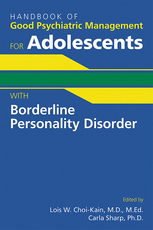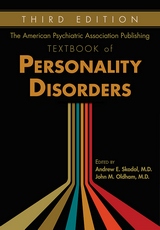Disorders of Narcissism
Diagnostic, Clinical, and Empirical Implications
View Pricing
Description
Within the last few decades, important clinical, theoretical, and empirical findings have stimulated enormous discussion and controversy regarding the nature of pathological narcissism and the definition and treatment of narcissistic personality disorder. The results of systematic studies of narcissistic personality disorder and the characteristics of pathological narcissism have clarified a number of diagnostic issues and precipitated changes in the diagnostic criteria set, but also provoked challenges to narcissistic personality disorder's diagnostic status and its validity as a long-term personality disorder.
Written by a distinguished group of experts who have made important contributions to our understanding in this field, Disorders of Narcissism: Diagnostic, Clinical, and Empirical Implications is the most comprehensive overview of narcissistic pathology and narcissistic disorders to date. Combining the latest empirical evidence, clinical diagnostic observations, and advances in treatment, this volume addresses important subjects at the forefront of the study of narcissism, including cognitive treatment, normal narcissism, pathological narcissism and suicide, and the connection between pathological narcissism, trauma, and alexithymia.
The book is divided into four parts. The authors discuss relevant areas of development in the field, highlight specific theoretical rationales, pinpoint differences in diagnostic and technical approaches to the study of narcissism, and illuminate areas for further clinical and empirical investigation.
Contents
- Foreword.
Diagnostic and Theoretical Considerations
. Introduction to Section I. Normal narcissism: an etiological and ethological perspective. Pathological narcissism and narcissistic personality disorder: theoretical background and diagnostic classification. Further developments in the clinical diagnosis of narcissistic personality disorder. The DSM narcissistic personality disorder: historical reflections and future directions. Developmental aspects of normal and pathological narcissism.Treatment Implications.
Introduction to Section II. Transference and countertransference in the treatment of narcissistic patients. Psychoanalysis of patients with primary self-disorder: a self psychological perspective. An object relations theory approach to psychoanalysis with narcissistic patients. Treatment of narcissistic disorders in the intensive psychiatric milieu. Narcissistic patients in group psychotherapy: containing affects in the early group. Schema-focused therapy for narcissistic patients. Manifestations of narcissistic disorders in couples therapy: identification and treatment.Special Clinical Considerations.
Introduction to Section III. Affect regulation and narcissism: trauma, alexithymia, and psychosomatic illness in narcissistic patients. Pathological narcissism and self-regulatory processes in suicidal states.Research.
Introduction to Section IV. Empirical studies of the construct validity of narcissistic personality disorder. Pathological narcissism: long-term stability and presence in Axis I disorders. Association between psychopathy and narcissism: theoretical views and empirical evidence. Narcissistic personality disorder in adolescent inpatients: a retrospective record review study of descriptive characteristics. Afterword. Index.
About the Authors
Elsa F. Ronningstam, Ph.D., is Assistant Clinical Professor of Psychology at Harvard Medical School, The Psychosocial Research Center at McLean Hospital in Belmont, Massachusetts, and a Candidate at the Boston Psychoanalytic Society and Institute in Boston. She is also Associate Clinical Psychologist at McLean Hospital and at Two Brattle Center in Cambridge, Massachusetts.
Related Products
Carousel Control - items will scroll by tabbing through them, otherwise arrows can be used to scroll one item at a time








